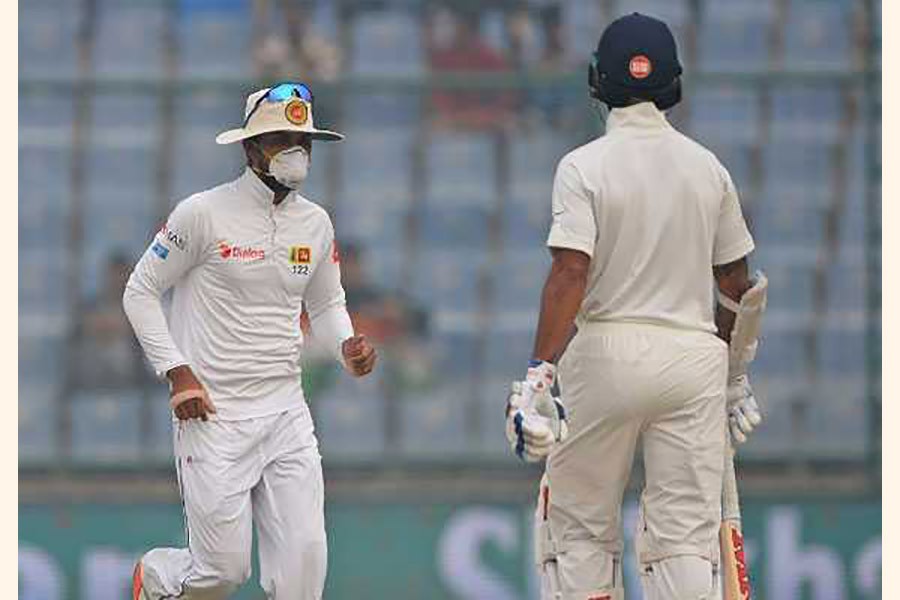Unpleasant visuals of Sri Lankan cricketers wearing face masks on the cricket field have reignited debate about hosting major sports in heavily polluted New Delhi.
Doctors have urged cricket's governing body BCCI to revise its rulebook after a Test match between India and Sri Lanka went ahead in the capital despite players wheezing for air and saying they were vomiting.
The cricketers returned on Monday for day three of the third Test even as air pollution at Delhi's Feroz Shah Kotla stadium soared to hit 18 times the World Health Organization's safe level, as per a report on NDTV.
Play had been disrupted three times on Sunday as Sri Lankan players complained of illness, but umpires ruled the match would proceed.
The Indian Medical Association condemned the decision, warning that playing in such conditions puts athletes' health at serious risk.
"This match should not have taken place in the first place. It is time the ICC (International Cricket Council) comes up with a policy on pollution," said IMA president K. K Aggarwal.
"You have fast bowlers, batsmen and fielders out there exposed to these very harmful pollutants over five days at a stretch. It takes a serious toll on your health in the long run," he said.
The Board of Control for Cricket in India, BCCI, declined to comment. It has accused Sri Lanka of making a "big fuss", pointing to Indian skipper Virat Kohli, who hit a record sixth Test double century despite the smog.
But the US embassy website on Monday urged Delhi residents to "avoid all outdoor exertion" as concentrations of the smallest and most harmful airborne pollutants known as PM2.5 soared to hazardous levels.
These tiny particles -- a fraction the size of human hair -- lodge deep in the lungs and are linked to higher rates of chronic bronchitis, lung cancer and heart disease.
The concentration of such particles Monday hit 448 -- compared to a maximum level of 25 considered safe by the World Health Organization over a 24-hour period.
Even limited exposure can cause shortness of breath and make the eyes weep and throat burn.


